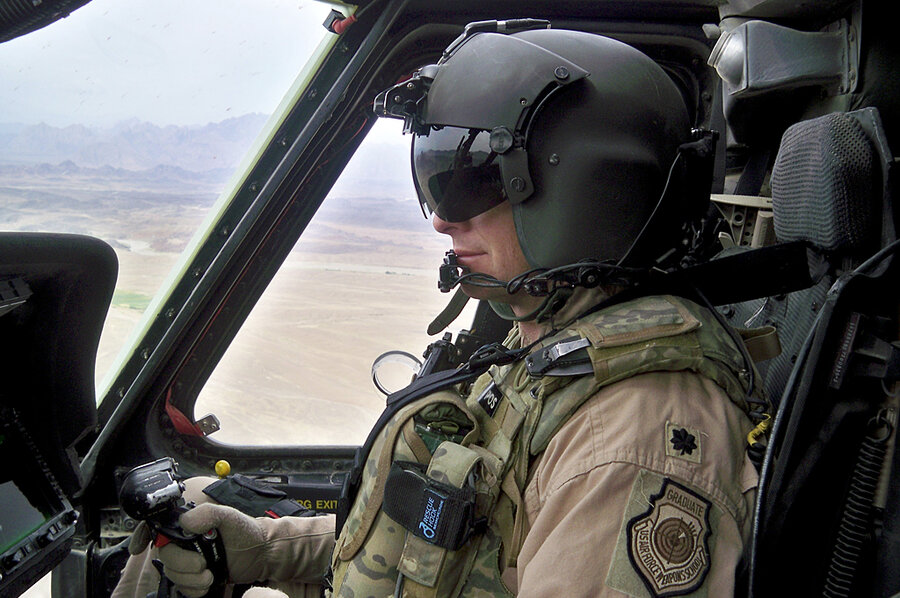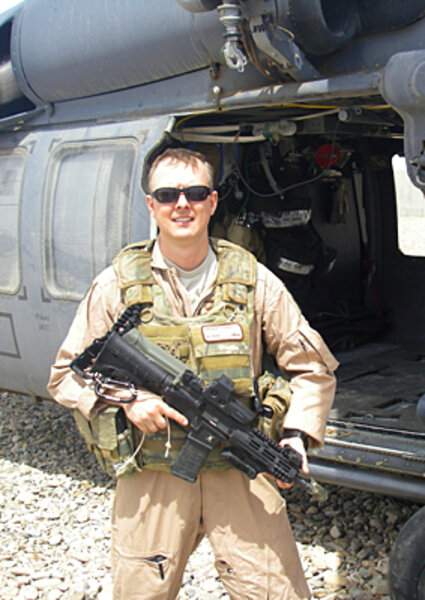Two harrowing US military rescues offer haunting portrait of Afghan war
Loading...
| WASHINGTON
Special Operations Forces were pinned down in the violent southern region of Kandahar when Air Force pararescuers got the call to come to their aid.
The Air Force’s 34th Weapons Squadron’s Combat Search and Rescue (CSAR) team, comprised of experienced helicopter pilots and combat medics known as pararescuers, had just arrived in Afghanistan.
But over the course of the next 24 hours, it would be in the midst of combat operations, after receiving a desperate call for rescue.
It was a pace that would continue throughout the unit's time in southern Afghanistan. For the next 80 days, it would be on alert 24 hours a day. During that time, crews flew a total of 550 combat missions, saving more than 300 lives, by the estimates of Col. Christopher Barnett, then the commander of the 34th Weapons Squadron.
For most of his crew, that meant they were flying anywhere from five to 10 combat missions a day.
But in April 2009 came a call that was particularly dire: A US Army Green Beret unit in Helmand Province was pinned down under heavy attack from Taliban forces.
“These guys,” Colonel Barnett recalls, “could not get into their vehicles – could not, you know, move further down the road and were taking fire from really different directions. So they really couldn’t do a whole lot about it.”
A US military quick reaction force, QRF, had come in to try to relieve the Green Berets, but were soon pinned down with them.
Apache attack helicopters had also already tried to help these US forces, but because of heavy machine gun fire coming from nearby Taliban compounds, they “could not get close enough to where they could confirm where they enemy was,” recalls Maj. Brian Creel, who was flying the combat mission that day.
The B-1 bombers in the area could not help stave off the attack, either: Though they had dropped bombs, they could not attack the Taliban compound, “because they couldn’t confirm which compound it was and also the possibility of civilian casualties,” Major Creel explains. US troops may have been in jeopardy, too: The Taliban forces were “danger close” in military parlance – meaning in the course of dropping bombs, the pilots might kill not only enemy forces, but US soldiers as well.
The first job of the pararescuers on the scene, then, was to fly within 200 feet of the suspected Taliban compound in their Blackhawk helicopters. “We had to get low enough to where we could, no kidding, confirm that that’s where they were,” Creel says.
Once we did that, we turned back around and set ourselves up in a – in an L-attack pattern that we used to fix our guns forward and shoot forward,” he adds, “and focus all four of our machine guns into that one compound at the same time.”
This then gave the Green Berets and the QRF pinned down with them the chance to attack. “If you saw them jump up and storm that compound – I mean, they were still getting some fire,” Creel recalls. “They went in because they had to do it.”
The Green Berets were ultimately successful in taking the compound, thanks to help from Barnett, Creel, and the other CSARs.
For the rest of the month, the pace of fighting flagged as Taliban fighters once again became farmers intent on their work during poppy harvest season. But by the end of May, the Taliban had returned with a vengeance.
US Special forces were operating in a Helmand region known to US troops, ironically, as the “Green Zone.” A fertile farming swath of southern Afghanistan, it is one of the most dangerous areas in Afghanistan for US forces – quite unlike the "Green Zone" in Baghdad, a generally safe area where many US troops were based during the Iraq war.
On May 18, 2009, Special Operations Forces forces took over a Taliban-dominated village market, confiscating large quantities of opium poppy. “When the Taliban woke up the next morning,” Barnett recalls, “needless to say, they were pretty unhappy to find a special forces company had assaulted and taken over their stash.”
Then began the Taliban attack, what Barnett describes as “strengthening waves of Taliban opposition” that “at times completely encircled” SOF forces, who were being attacked from three different directions.
“I mean, it literally, it was like the Alamo,” Barnett says. “After one attack would, you know, fail or peter out, [the Taliban would] get on their cellphones and start calling more guys and then, you know, a larger group would continue to show up.”
The Special Operations Forces “had no relief” – it was deemed too dangerous for any US reinforcements to go in.
Before the assault began, SOF forces had anticipated a multiday mission. But by the end of the first day, “these guys were already running low on ammunition, water, and food,” says Barnett. “The fight was so intense for these guys down there, and I honestly have never seen anything like it.”
The US Air Force CSAR forces, accustomed to combat rescue missions in the midst of heavy fighting, were running rescue missions. By their second rescue run, they were “loading up and bringing water and bringing extra ammunition down to them and dumping it with them when we’d end up going in for a casualty.”
Typically, they would not carry any of these resupplies with them. These helicopters typically fly light because they are often carrying casualties back to base and must be prepared to lift off at a moment's notice. But in this case, they made the decision to do it because they could see that these troops were in such dire straits.
For these rescue missions, Barnett and Creel were each awarded the Distinguished Flying Cross with Valor medals in a service at the Pentagon last week, a story that was largely lost amid the coverage of the NATO summit in Chicago and plans for how, precisely, the US military will begin to exit Afghanistan in 2013.
Such rescue missions are less frequent in southern Afghanistan, where US forces are now pulling out as the war winds down. They continue in the mountains of eastern Afghanistan.
At times, such rescue missions feel like an “uphill battle,” Barnett says. But the point, he adds, is helping comrades in arms.
“When you call that person on the radio and that ground force commander knows the voice of the rescue pilot that’s going to pick them up, you’re going to do what you need to do to figure it out,” Creel adds. “And that’s really the bottom line."








